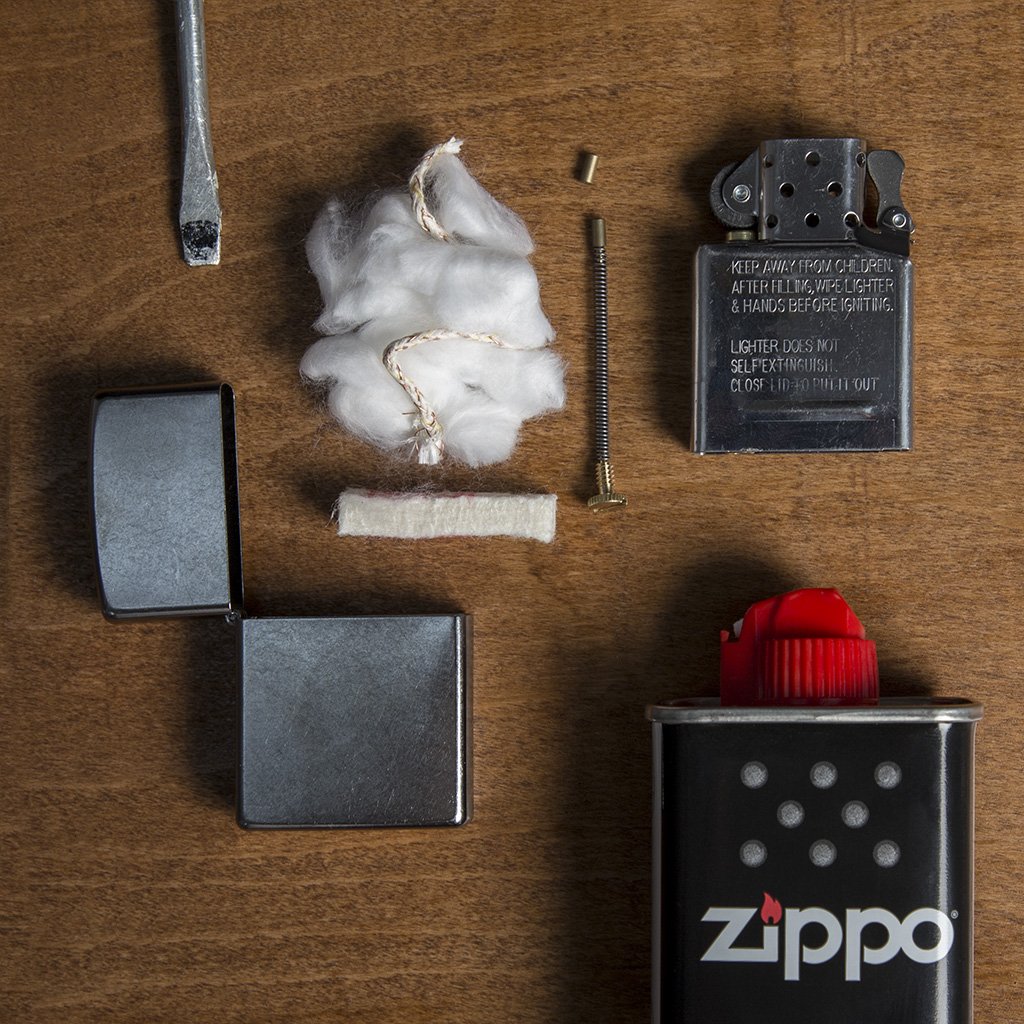Zippo Inside Out
- Vietnam War Zippo
To produce a durable and windproof flame, all you need to do is to open the cover and strike the wheel. Although the operation of the Zippo lighter is simple, its internal structure is unlike that of the common lighter. A total of 22 parts are used, and the production process needs to go through 108 steps.
The special Zippo lighter fluid, a light petroleum distillate or synthetic isoparaffinic hydrocarbon, met “increases the windproof effect. As an extra support, the top cover protects the flame when lighting a cigarette against the wind. This defining feature is extensively used in advertising and gave the Zippo its commercial baseline: the “windproof lighter”. Early advertisements challenged their audiences to do the “Fan Test” by holding a lit Zippo in front of a fan.
Inside the hollow metal box is the core part of the Zippo. It contains rayon balls that absorb the special lighter fuel and a non-flammable wick with a braided copper wire running through. At the bottom is a piece of felt approximately 6.35 mm thick. It also contains a tube that holds a short cylindrical flint, which can also be replaced using a tool designed especially for this purpose. This tube has an interior spring and an exterior cap-screw that keeps the flint in constant contact with the wheel.
Spinning the wheel of the Zippo against the flint results in a spark that ignites the fluid in the wick. Because of the principle of physics, this friction causes the molecules of the flint to vibrate strongly against the air molecules, which will then start to vibrate intensely and produce a spark. When the temperature reaches higher than the ignition point of the gas in the lighter, the escaping gas is ignited to form a flame.
](https://micrio.thingsthattalk.net/XeXPq/views/max/640x640.jpg)
Fig. 2. The Zippo inside out